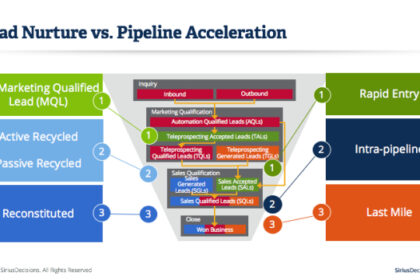In an era defined by unprecedented information overload and the relentless pursuit of truth, investigative journalism stands as a cornerstone of democratic societies. Its mission to uncover hidden facts, expose wrongdoing, and hold power accountable is more critical than ever. Yet, the sheer volume and complexity of data available today often overwhelm even the most dedicated journalists. Enter generative AI – a revolutionary technological advancement that promises to transform the landscape of investigative reporting. From sifting through mountains of documents to identifying subtle patterns that human eyes might miss, generative AI offers powerful tools that can accelerate and deepen investigations.
- Understanding Generative AI and its Transformative Potential for Investigative Journalism
- The Promise: How Generative AI Revolutionizes Investigative Reporting
- Enhanced Data Analysis and Pattern Recognition
- Automated Content Generation and Summarization
- Accelerated Information Gathering and Cross-Referencing
- Navigating the Ethical Minefield of Generative AI in Journalism
However, this transformative potential comes hand-in-hand with a labyrinth of challenges. The integration of generative AI into such a sensitive field raises profound ethical implications, demanding careful consideration of bias, transparency, and accountability. Moreover, ensuring the unimpeachable data integrity of AI-generated insights is paramount, as the credibility of journalism hinges on accuracy. This comprehensive article delves into the symbiotic relationship between generative AI and investigative journalism, exploring the cutting-edge technological advancements, the immense opportunities they present, and the critical ethical frameworks and safeguards required to harness this power responsibly. We will examine how journalists can leverage these tools while meticulously upholding the core tenets of their profession.
Understanding Generative AI and its Transformative Potential for Investigative Journalism
Generative Artificial Intelligence (AI) refers to a class of AI models capable of creating new content, rather than merely analyzing or classifying existing data. These models, often powered by deep learning architectures like neural networks, learn patterns and structures from vast datasets and then generate novel outputs such as text, images, audio, or even video. Large Language Models (LLMs) like GPT-4 are prime examples, trained on colossal amounts of text to understand context, generate coherent narratives, summarize complex documents, and answer questions with remarkable fluency.
For investigative journalism, the advent of generative AI represents a paradigm shift in how information is processed, analyzed, and synthesized. Traditionally, investigative reporting has been a labor-intensive process, involving manual review of countless documents, interviews, and painstaking cross-referencing. Generative AI tools can significantly augment these efforts, acting as powerful assistants that extend the capabilities of journalists.
Here are some key areas where generative AI holds immense promise:
- Advanced Data Analysis and Pattern Recognition: Generative AI can rapidly process and identify anomalies within massive, unstructured datasets – financial records, legal documents, social media feeds, or public records. This ability to discern subtle connections or outliers can be crucial in uncovering corruption, fraud, or systemic issues.
- Automated Content Summarization and Drafting: Journalists often spend hours summarizing lengthy reports, transcripts, or court documents. Generative AI can quickly generate concise summaries, distill key arguments, or even draft initial versions of articles or reports based on provided information, freeing up journalists for more critical analysis and verification.
- Accelerated Information Gathering and Research: AI can be deployed to scour databases, news archives, and scientific papers, extracting relevant facts, figures, and contextual information much faster than human researchers. This speeds up the initial research phase of an investigation.
- Translation and Cross-Lingual Analysis: For international investigations, generative AI can provide rapid and accurate translation of documents and communications across multiple languages, breaking down linguistic barriers and enabling broader scope.
- Sift Through Petabytes of Data: Unlike human researchers, AI can process terabytes or even petabytes of information in a fraction of the time, identifying relevant passages, entities, and relationships.
- Uncover Hidden Connections: By analyzing linguistic patterns, metadata, and numerical sequences across diverse datasets, AI can detect subtle correlations, anomalies, or inconsistencies that might indicate illicit activities, systemic biases, or undisclosed interests. For instance, an AI could cross-reference public procurement records with company directorships and social media activity to flag potential conflicts of interest.
- Visualize Complex Networks: Generative AI can aid in creating interactive visualizations of complex networks – such as financial transactions, political lobbying, or social influence – making intricate relationships understandable and identifiable for further human investigation.
- Summarizing Lengthy Documents: Imagine an investigation involving thousands of pages of court transcripts, corporate reports, or legislative bills. An AI can distill these into concise summaries, highlighting key arguments, decisions, or financial figures, allowing journalists to quickly grasp the core content.
- Drafting Initial Reports and Backgrounders: For foundational research, AI can generate preliminary background reports on individuals, companies, or specific events by synthesizing information from credible sources. These drafts serve as a starting point, requiring rigorous human verification and enrichment.
- Extracting Key Information: AI can be programmed to extract specific entities (names, organizations, dates, locations), facts, or sentiment from large bodies of text, organizing them into structured formats that are easier for journalists to analyze. This significantly accelerates the information retrieval phase of investigative journalism.
- Rapid Source Aggregation: AI can quickly pull together information from a multitude of open-source intelligence (OSINT) channels, news archives, academic databases, and government portals, providing a comprehensive overview of a subject.
- Cross-Referencing and Fact-Checking Assistance: While not a replacement for human fact-checkers, AI can assist in cross-referencing claims against established facts or multiple sources, flagging discrepancies for human review. This enhances the initial verification layers.
- Language Barrier Demolition: For global investigations, AI’s advanced translation capabilities can instantaneously make foreign-language documents accessible, enabling journalists to pursue leads across geographical and linguistic boundaries.
- Fabricated Audio and Video: AI can generate realistic audio recordings of individuals saying things they never said, or videos depicting events that never occurred. This poses an existential threat to truth and can be used to discredit sources, manipulate public opinion, or sow widespread confusion.
- Synthetic Text and Narratives: AI can produce entirely fabricated news articles, witness testimonies, or official-looking documents that are plausible but untrue. This makes it increasingly difficult for the public, and even seasoned journalists, to distinguish fact from fiction.
- Discriminatory Outcomes: An AI used to analyze crime data might perpetuate biases present in historical policing records, leading to skewed interpretations or disproportionate focus on certain demographics.
- Reinforcing Stereotypes: If training data is skewed, AI-generated summaries or content drafts might inadvertently reinforce stereotypes, misrepresent minority groups, or overlook critical perspectives.
These technological advancements are not about replacing the journalist, but rather empowering them with tools to operate with greater efficiency, delve deeper into complex subjects, and ultimately, produce more impactful investigative journalism.

The Promise: How Generative AI Revolutionizes Investigative Reporting
The integration of generative AI into the toolkit of investigative journalists is reshaping traditional methodologies, offering unprecedented avenues for discovery and analysis. The potential for revolutionizing how hidden truths are brought to light is significant, transforming resource-intensive tasks into streamlined, AI-assisted processes.

Enhanced Data Analysis and Pattern Recognition
One of the most immediate and profound benefits of generative AI is its capacity for advanced data analysis. Investigative journalists frequently grapple with vast quantities of unstructured data – emails, PDFs, audio recordings, leaked documents, and public records – often in disparate formats. AI models can:
This capability to rapidly extract insights from overwhelming data empowers journalists to focus on the nuanced interpretation and contextualization of findings, rather than the arduous task of initial data sifting.

Automated Content Generation and Summarization
While generative AI should never be used to produce final, unverified journalistic content, its role in drafting and summarization is invaluable.

Accelerated Information Gathering and Cross-Referencing
The speed and breadth of AI-powered information gathering can drastically cut down research time.
Key takeaway: Generative AI functions as a powerful digital assistant, augmenting the journalist’s capacity for deep investigation, accelerating research, and revealing insights that would otherwise remain buried in vast datasets. This allows journalists to dedicate more time to critical thinking, source development, and the nuanced storytelling that defines impactful investigative journalism.
Navigating the Ethical Minefield of Generative AI in Journalism
The integration of generative AI into investigative journalism is a double-edged sword. While offering unparalleled opportunities, it also ushers in a complex array of ethical implications that demand rigorous attention and proactive mitigation strategies. The core principles of journalism – accuracy, fairness, transparency, and accountability – must remain sacrosanct, especially when leveraging powerful, yet imperfect, AI technologies.
Deepfakes and Misinformation: The Weaponization of Synthetic Media
Perhaps the most alarming ethical concern is the potential for generative AI to create highly convincing deepfakes and other forms of synthetic media. These can include:
Investigative journalists, whose mission is to expose falsehoods, must now also contend with the possibility of being misled by sophisticated AI-generated disinformation, or worse, having their legitimate work undermined by similar technologies used by malicious actors.
Bias in AI Models: Perpetuating and Amplifying Injustice
Generative AI models learn from the data they are trained on. If this training data reflects existing societal biases – whether racial, gender, socioeconomic, or political – the AI will inevitably inherit and often amplify these biases in its outputs.
Journalists must be acutely aware of the potential for algorithmic bias and actively interrogate AI outputs, understanding that the tool is not neutral but a reflection of its training data. This requires a critical approach to AI-generated insights,







